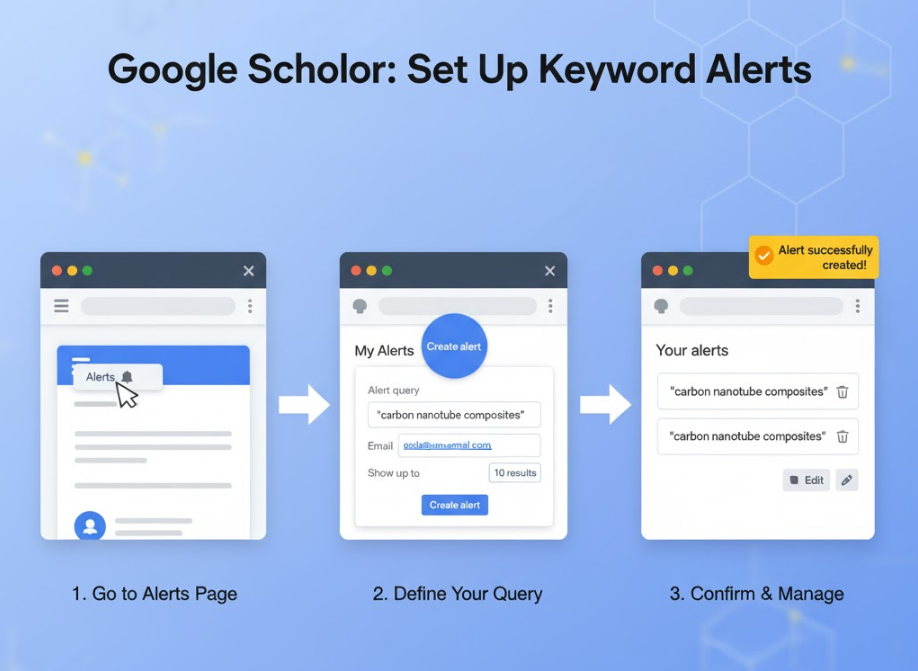

320 views||Release time: Oct 24, 2025
Conducting a thorough literature review is the foundation of any strong research project. It involves finding relevant papers, reading and synthesizing vast amounts of information, identifying research gaps, and understanding the scholarly conversation around your topic. Traditionally, this is a time-consuming, manual process.
Enter Artificial Intelligence. A new generation of AI-powered tools promises to accelerate and enhance the literature review process, acting as intelligent research assistants. But which tools are genuinely useful, and how can you leverage them effectively?
This guide highlights some of the best AI tools designed to help researchers navigate the literature more efficiently.
Crucial Disclaimer: AI tools are assistants, not replacements for critical thinking. Always verify the information they provide, critically evaluate the sources, and never use AI-generated text directly without significant editing, proper attribution (if required by policies), and ensuring it accurately reflects your own understanding. Be aware of potential "hallucinations" (invented information or citations).

Elicit is a powerful AI research assistant specifically designed to help with literature review tasks.
Key Strengths:
Question-Based Search: Instead of just keywords, you can ask Elicit a research question (e.g., "What are the effects of mindfulness meditation on student stress?"). It finds relevant papers and attempts to directly summarize findings related to your question from the abstracts.
Structured Information Extraction: It can scan papers and extract specific information into a table (e.g., population studied, methodology, key findings, limitations). This is incredibly useful for comparing studies systematically.
Concept Mapping & Brainstorming: Helps explore related concepts and refine research questions.
Best For: Finding papers based on research questions, systematic reviews, quickly comparing methodologies or findings across multiple papers.
While primarily an academic search engine, Semantic Scholar incorporates several AI features that significantly enhance literature discovery.
Key Strengths:
TLDR Summaries: Provides AI-generated, single-sentence summaries for millions of papers, helping you quickly assess relevance.
Citation Context: Shows how a paper cites another (background information, methods, results comparison), helping you understand the relationship between papers.
Influential Citations: Identifies which citations within a paper are considered most significant by its algorithm.
Smart Search: Uses AI to understand the context of your search query better than traditional keyword searches.
Best For: Rapidly assessing paper relevance, understanding citation networks, finding influential papers.
Scite focuses specifically on the context of citations, helping you understand how research findings are being received and used by the community.
Key Strengths:
Smart Citations: Classifies citations based on whether they provide supporting or contrasting evidence for the cited claim, or simply mention it.
Citation Statements: Shows the actual sentence where a citation occurs, providing immediate context without having to open the citing paper.
Reliability Check: Helps gauge the credibility of a paper by showing how often its findings have been supported or contradicted by subsequent research.
Best For: Critically evaluating papers, understanding the scholarly debate around a topic, finding supporting or contrasting evidence.
These tools excel at visually mapping the literature and helping you discover relevant papers through connections.
Key Strengths:
Visual Exploration: Generate graphs showing how papers are connected through citations, helping you understand the structure of a research field.
"Snowballing" Made Easy: Start with a key paper ("seed paper"), and these tools will find related earlier and later work, allowing you to easily explore the literature network.
Serendipitous Discovery: The visual approach often helps uncover relevant papers you might miss with linear keyword searching.
Best For: Exploring a new field, finding seminal papers, ensuring comprehensive literature coverage through citation connections.
Scholarcy acts like an AI-powered reading tool, breaking down papers into more digestible summaries.
Key Strengths:
Structured Summaries: Generates summaries broken down into sections like Abstract, Highlights, Methods, Results, Limitations.
Key Concept Extraction: Identifies and links key terms and concepts within the paper.
Reference Extraction: Pulls out the cited references for easy follow-up.
Best For: Quickly grasping the key points of a paper, extracting essential information for note-taking.
Large language models can be adapted for literature review tasks but require the most caution.
Potential Uses: Summarizing text pasted into them, brainstorming keywords, rephrasing sentences (use ethically!), generating outlines.
Major Risks: High likelihood of hallucinating sources and citations. Cannot independently access or verify paywalled research papers accurately. Requires constant fact-checking.
Best For: Assisting with writing about the literature you've already found and read, rather than discovering or summarizing it directly.
Verify Everything: Never trust an AI's summary or citation without checking the original source paper yourself.
Use Multiple Tools: Combine the strengths of different tools (e.g., Elicit for structured search, ResearchRabbit for exploration, Semantic Scholar for quick relevance checks).
Focus on Assistance, Not Replacement: Use AI to speed up discovery and initial summarization, but the critical analysis, synthesis, and writing must be your own.
Check Policies: Be aware of your institution's and potential publishers' policies on the use of AI in research and writing. Disclose use when required.
Conclusion
AI tools offer powerful new ways to tackle the challenges of literature review. By understanding their specific strengths and weaknesses and using them ethically as intelligent assistants, you can significantly enhance the efficiency and comprehensiveness of your research foundation.